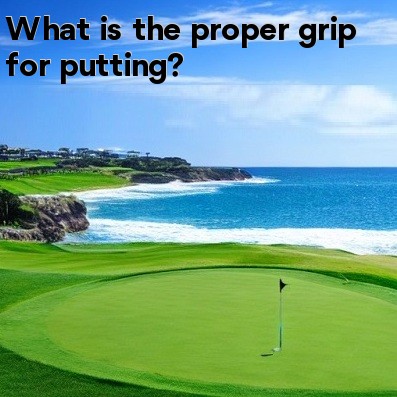
The Proper Grip for Putting in Golf
When it comes to putting in golf, having the proper grip is essential for success. The grip is the foundation of your stroke and can greatly influence your ability to control the speed and direction of the ball. In this article, we will discuss the proper grip for putting and how it can improve your overall performance on the green.
The Traditional Grip
The most common grip used in putting is the traditional grip, also known as the reverse overlap grip. To achieve this grip, follow these steps:
- Place your left hand (for right-handed golfers) on the grip of the putter with your palm facing up.
- Wrap your fingers around the grip, ensuring that the handle rests across the base of your fingers.
- Place your right hand on top of your left hand, aligning your palms.
- Overlap your right pinky finger (or ring finger) between your left index and middle fingers.
This grip allows for better control and stability during the putting stroke. It encourages a pendulum-like motion, promoting a smooth and consistent stroke.
The Claw Grip
The claw grip is an alternative grip that has gained popularity in recent years. To achieve this grip, follow these steps:
- Place your left hand on the grip of the putter as you would in the traditional grip.
- Instead of wrapping your right hand on top, rest the palm of your right hand on the top of the grip.
- Curve your right index and middle fingers into a claw-like shape, with the tips of these fingers touching the grip.
The claw grip promotes a relaxed and tension-free stroke. It can help reduce hand and wrist movement, resulting in a more controlled and consistent putting stroke.
The Split-Hand Grip
Another grip option for putting is the split-hand grip. To achieve this grip, follow these steps:
- Place your left hand on the grip of the putter, similar to the traditional grip.
- Position your right hand slightly lower down the grip, with the palm facing up.
- Ensure that your right index finger is resting against the fingers of your left hand.
The split-hand grip provides a unique feel and can be beneficial for golfers who struggle with consistency in their putting stroke. It can help promote a smoother and more controlled stroke.
Experiment and Find What Works Best for You
While the traditional grip is the most commonly used grip in putting, it is important to remember that every golfer is unique. Experiment with different putter grips and find the one that feels most comfortable and natural for you. The key is to achieve a grip that promotes stability, control, and a consistent stroke.
Conclusion
The proper grip for putting is crucial for success on the green. Whether you choose the traditional grip, the claw grip, or the split-hand grip, finding a grip that allows for stability, control, and a smooth stroke is essential. Take the time to experiment with different grips and practice regularly to improve your putting performance in golf.





